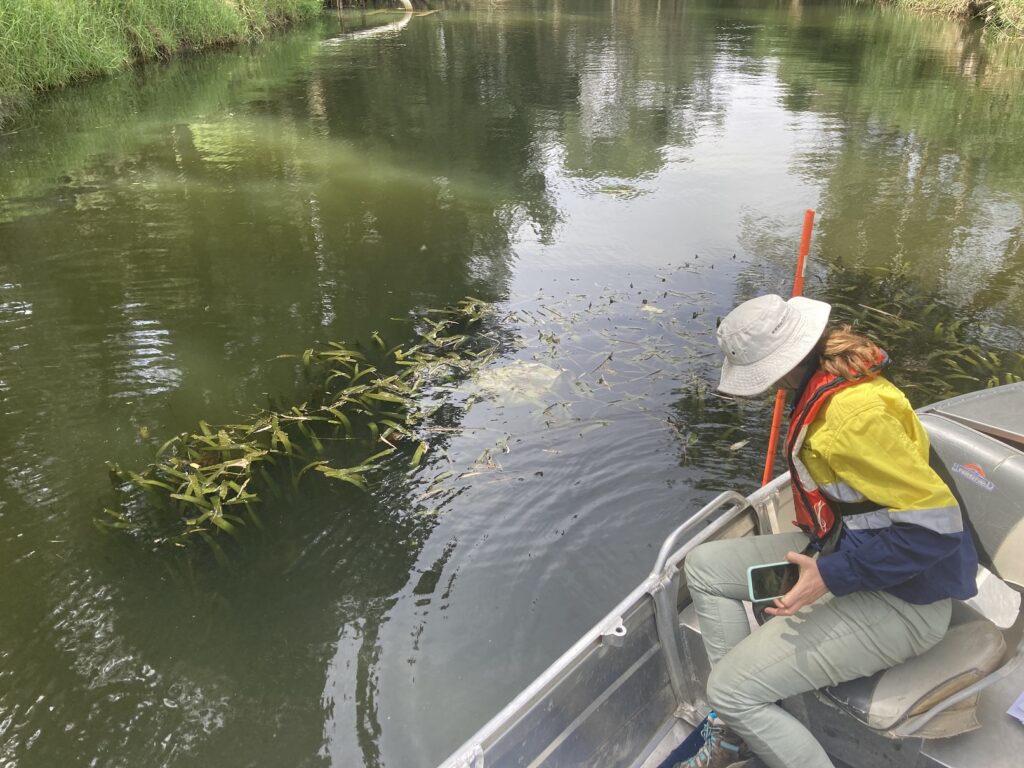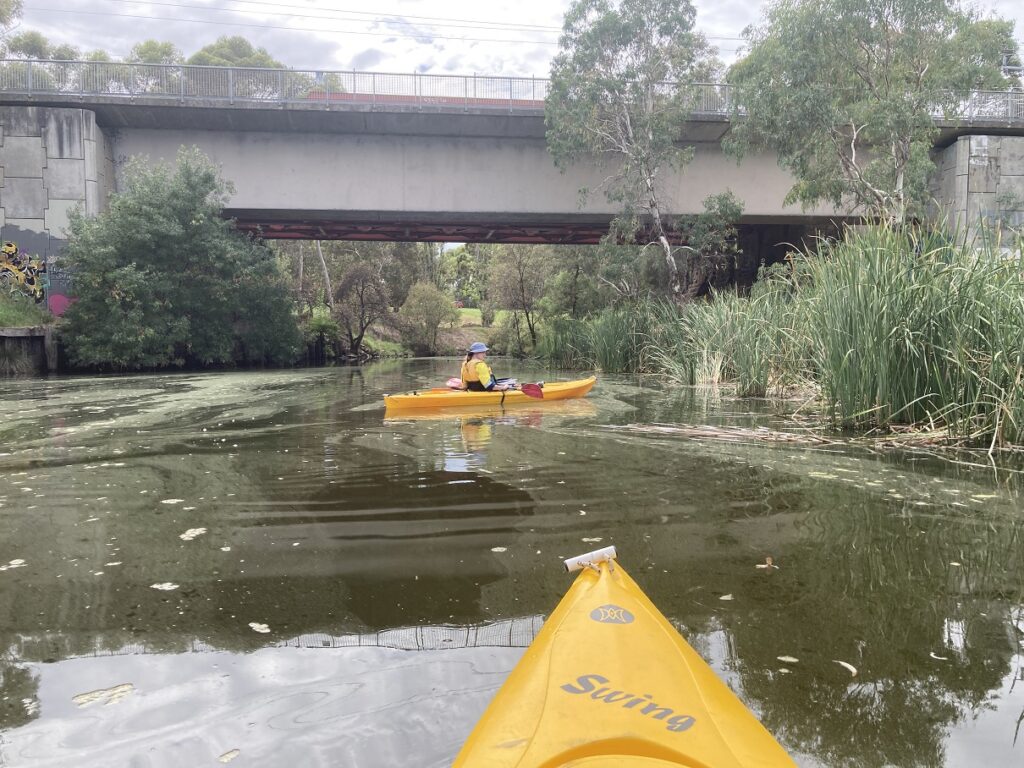Surveying Aquatic Vegetation in Karrawirra Pari/the River Torrens
In early March, Ben and Tessa took to the water to survey submerged aquatic vegetation in Karrawirra Pari/the River Torrens. NGT first undertook this monitoring for the City of Adelaide in 2020, and repeated it in 2022. This year the survey has been expanded to include the section of the river downstream of the main weir, within Bonython Park.
Submerged aquatic vegetation was historically extensive within the Torrens Lake, covering approximately 30% of the lakebed, but following the draining and dredging of the lakebed in the late 1990s, it failed to re-establish its former extent. Submerged aquatic plants play a number of important ecological roles: they improve water quality, reduce erosion, provide protective cover for fish and provide food and nesting materials for waterbirds. The extent and general condition of submerged aquatic vegetation in the Torrens Lake provides a measure of ecosystem health and the effectiveness of management at a catchment and local scale. However, it is always difficult to disentangle the influences of management actions from natural drivers, particularly weather patterns, that can strongly influence aquatic ecosystems.

As in previous years, this year we detected some beds of aquatic vegetation, including curly pondweed (Potamogeton crispus) and native ribbon weed (Vallisneria australis). The next step is to analyse the data to determine any trends against previous surveys. Submerged vegetation was only present where the water depth was less than 1.5 m, which was consistent with our previous surveys. It is likely that, due to the turbidity of the water, light penetration at depths greater than 1.5 m is insufficient to support submerged aquatic vegetation. Approximately 80% of the lake is deeper than 1.5 m, meaning that the potential maximum extent of submerged aquatic vegetation is likely around 20%. Historical coverage of 30% or greater was likely only possible due to the lake having clearer water at that time, allowing submerged plants to persist in deeper areas.

Karrawirra Pari/the River Torrens remains an attractive feature in the heart of Adelaide and supports a range of ecological values in addition to its aesthetic and recreational values. Optimising its ecological health will always be a challenge due to the highly urbanised nature of its catchment, but catchment-scale and site-scale efforts to improve water quality should continue to be pursued.
This work was funded by the City of Adelaide as part of a major survey of biodiversity in the Adelaide Parklands.
